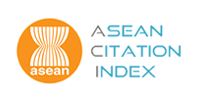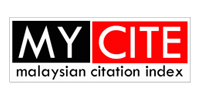Submissions
Submission Preparation Checklist
As part of the submission process, authors are required to check off their submission's compliance with all of the following items, and submissions may be returned to authors that do not adhere to these guidelines.- The submission has not been previously published, nor is it before another journal for consideration (or an explanation has been provided in Comments to the Editor).
- The submission file is in Microsoft Word document file format.
- Presenting your work in well-written English gives it its best chance for editors and reviewers to understand it and evaluate it fairly.
- Where available, URLs for the references have been provided.
- The text adheres to the stylistic and bibliographic requirements outlined in the Author Guidelines.
- For first submission, all illustrations, figures, and tables are placed within the text at the appropriate positions for review purpose.
- Figures are uploaded separately in a single Word document and denoted as "Others" for copyediting purpose.
- When submitting your manuscript you are required to suggest 3 potential peer reviewers. The editors will not necessarily invite your suggested reviewers but these suggestions can help speed up the peer review process.
Articles
Section default policyPrivacy Statement
The names and email addresses entered in this journal site will be used exclusively for the stated purposes of this journal and will not be made available for any other purpose or to any other party.













